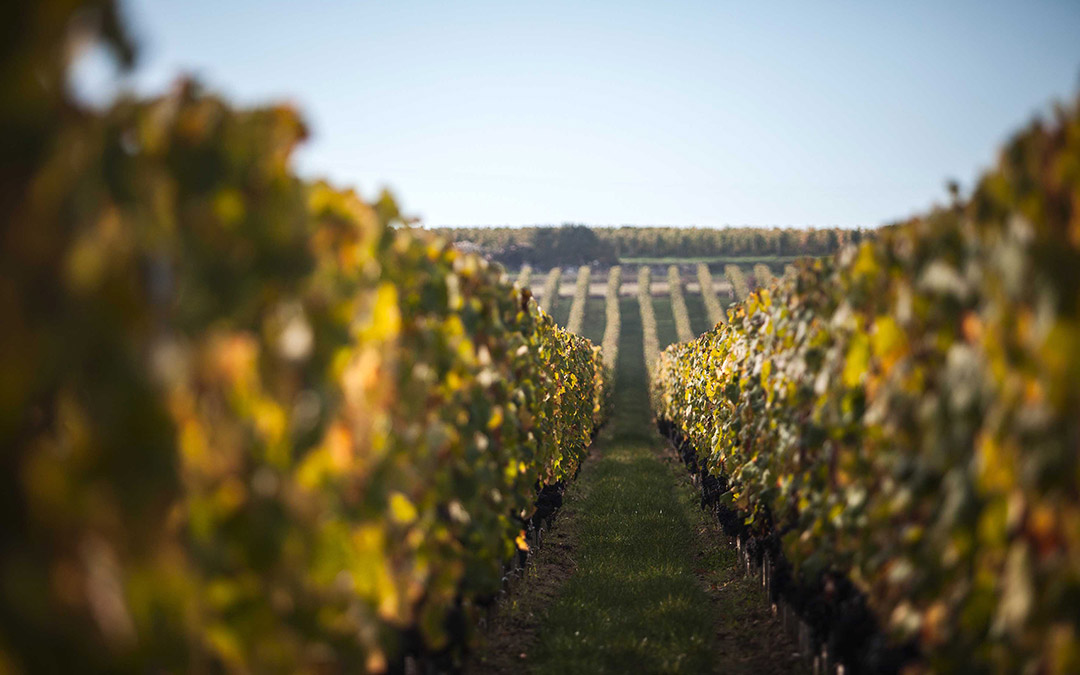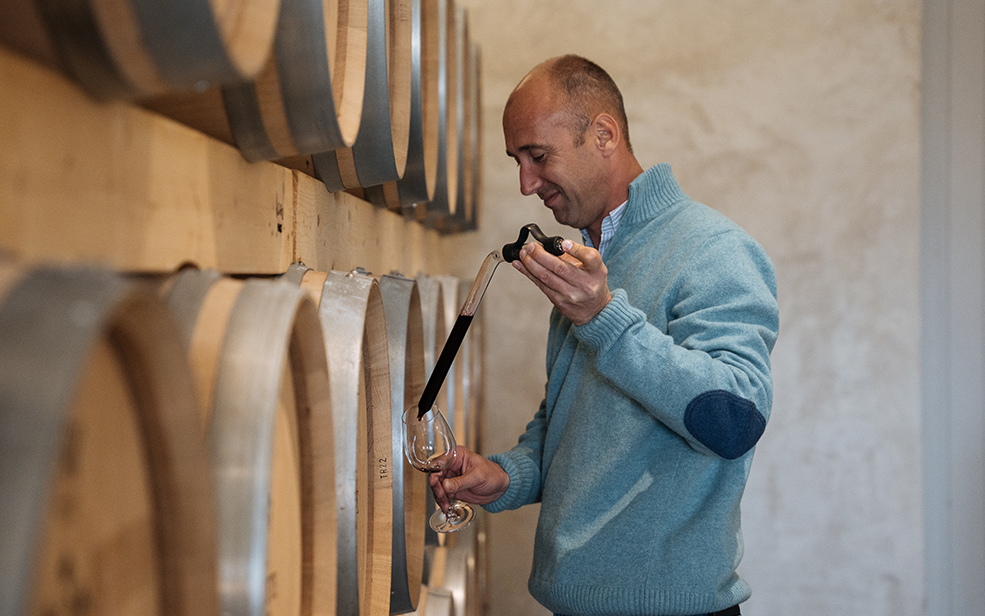The Badette estatecovers 9 hectares (22 acres) in one single plot neighbouring Saint-Christophe-des-Bardes and Saint-Emilion.
Expressing this terroir is not straightforward.
25 trenches were dug to understand the types of soil and sub-soil in which the vines grow. These excavations revealed different soils and drainage characteristics. Studies carried out by expert Xavier Choné revealed a range of different geological traits.
On the 1½-hectare (3.7 acre-) plot on the Figeac side, the soil has alluvial origins, but is poor, sandy and stony. It absorbs heat and allows water to drain away, which enables the vines to send down deep roots.
For wine-making purposes, it has great potential, especially for Cabernet grapes.
Three types of terroir exist around Château Badette. They are all at the bottom of slopes,
but vary according to the degree of incline.
The whole estate is located on the northern heights of the Saint-Emilion limestone plateau. The highest parts have brown earths over a clayey limestone subsoil.
Lower down, there are sandy clay brown soils with a Fronsac molasse sub-soil, where the vines’ roots grow more than two metres down. At the very foot of the slopes, near the road, there are clayey-sandy brown soils over Fronsac molasse.
This diversity, which can be found in the grapes, led quite naturally to the production of three different wines: Château Badette, La Fleur de Badette and Grand Monsieur de Badette.





